Did you know that 59 percent of consumers say marketing emails influence their purchase decision? Or that 50 percent of consumers make purchases from marketing emails at least once per month? These are telling stats that indicate the importance of email marketing.
If you haven’t set up an email marketing funnel for your business yet, you’re missing out on a prime sales opportunity. To get you up and running the right way, we put together a multitude of tips. Keep reading to gain key insights from marketing experts in various industries.
9 tips for building an email marketing funnel
- Use your website and social media channels
- Entice people with a valuable offer
- Minimize the information you ask subscribers
- Set up automated email sequences
- Choose an appropriate email marketing platform
- Incentivize current subscribers to get new subscribers
- Track performance
- Remember to convert subscribers to customers
- Prune your email list over time
9 tips for building an email marketing funnel
1. Use your website and social media channels to build your email list
Lacy Summers, marketing manager at Crush the PM Exam, says you should use whatever web properties you have available to build your email list. This includes your website, social media pages, YouTube channel, and so on. “Whenever possible, you should have your subscribe button or link front and center,” she says.
For websites, Summers suggests using scrolling buttons that are always visible: “This way, the instant a potential customer considers joining your mailing list — for example, after they read something particularly helpful or insightful on your blog — they can click through to the subscription form.
“As for YouTube channels, use mailing list buttons at the end of your videos and subscribe links in your description box and on your About page.”
2. Entice people to subscribe to your emails with a valuable offer
“You need a great lure to get people onto your mailing list,” says Andrew Laws, managing director of Andrew Laws Associates. “What does your audience love? What would make them feel like they are getting value from you, without requiring you to ‘give away the farm’?”
Laws says your offer could be something as simple as a free guide or as elaborate as a free trip. “My advice would be to start small,” he says. “For example, there’s no need to take on the expense of giving away a free trip if a box of chocolates will motivate your audience just as well.”
Shonavee Simpson-Anderson, SEO strategist at Firewire Digital adds, “The number one rule [when creating content] for Google is to be helpful. This should apply to your own marketing as well.”
Simpson-Anderson recommends creating something that genuinely helps your audience, such as a downloadable organizer, an analysis of a new trend and how to implement it, or a quiz that helps users decide what product would suit them best.
“Don’t add fluff or useless information to pages to make them appear longer or like more than it actually is. Just deliver what you promise and make it useful,” Simpson-Anderson explains.
3. Minimize the amount of information you ask subscribers to provide
“Whatever you offer to would-be subscribers, don’t be greedy,” says Simpson-Anderson. “People are becoming much more aware of how much information they give out. For most of them, a name and an email address doesn’t feel like too much. But beyond that, you risk turning people off.”
Simpson-Anderson notes that you don’t need more than their name and email address to communicate anyway — and people know that. If you ask for too much information, many people will stop trusting you or simply get frustrated with having to jump through so many hoops.
“There are exceptions to this, of course,” she says. “For example, an audience in the B2B market is generally more accepting of providing additional information. But in most cases, you should ask for minimal information to grow your email marketing funnel.”
4. Set up automated email sequences
“I can’t stress this enough — automate your emails,” says Simpson-Anderson. Having automated sequence software to send thank-you notes, shipping notices, or follow-up emails will save you a lot of time and can help capture some low-hanging fruit in your funnel.
“If you don’t have anyone in-house who can assist you with this,” she advises, “it’s definitely worth paying a small, one-off cost to get help setting up your automated email sequences properly.”
James Irwin, a digital marketing and SEO expert at Irwin Organic, says that a series of welcome emails to new subscribers is particularly important. A great foundation starts with having some sort of email introduction sequence for new contacts. Here’s his breakdown of what these emails should include:
- Email 1 should tell your audience what they can expect from you going forward. For example, share when you publish blog posts or when you go live on social media.
- Email 2 could familiarize the subscriber with your brand — for example, through telling your origin story.
- Email 3 can detail your brand values and what you stand for.
“You can include additional emails if they’re relevant and make sense for your audience,” says Irwin. “For example, you might share additional resources your audience would value related to the initial offer.”
While automated email sequences can be helpful, Laws cautions against going overboard: “Email sequences are great, but use them to warm your prospects to your brand, not to knock them out with a brutal marketing attack. These people are now in your ‘circle of trust.’ Treat them well so they stick with you over the long term.”
5. Choose an appropriate email marketing platform
Summers recommends nailing down which email marketing software has the best combination of affordability and features for your business. You may have to experiment with several different solutions to find the right fit. “Budget for a trial-and-error phase, and realize that some may be easier to use, while others may integrate better with your current applications.”
6. Incentivize your current subscribers to get new subscribers
Getting new people to sign up for your email list can be challenging because they may not know much about you or your company. But if you can get current subscribers to ask their colleagues, friends, and family to sign up, you’re much more likely to get a “yes” because the request is coming from a trusted source.
But how do you get your current subscribers to go that extra mile? Joshua Pelletier, CMO of BarBend, recommends giving incentives to loyal and engaged email subscribers to motivate them.
“What incentives you choose should be based on what you know about your audience,” he says. “For example, we use brand swag and other fun incentives to get the word out because it fits our brand style and subscribers respond well to them.”
7. Track performance
Brandon Monaghan, cofounder of Miracle Brand, says that once you have your email marketing funnel up and running, it’s important to pay attention to key metrics to accurately gauge success.
“We look at open rates, click-through rates (CTRs), and conversion rates to determine the effectiveness of the emails and continue growing our funnel,” Monaghan explains. “In terms of what’s effective, there are benchmarks that differ between industries.
“We take into account the size of the business, the size and quality of the audience, and the opportunity for repeat purchases. Outside of these factors, we ultimately look for continued improvement over time.”
Here are some key metrics Monaghan focuses on:
- Subscribe rate: how many people subscribe to the list
- Open rate: how many people open emails
- CTR: how many people click links in emails
- Placed-order rate: how many people buy
- Lifetime value (LTV): how many people buy again (he notes this metric is hard to track)
“For each metric, we start with a hypothesis, and we test,” says Monaghan. “We generally collect three data points to ensure the results are statistically relevant before we choose a winner and consider it a useful insight.”
8. Remember to convert subscribers to customers
The ultimate goals of having email subscribers are to build brand loyalty and increase revenue. So while it’s important to focus on engaging subscribers and maintaining their interest in your brand, don’t forget to entice them to make a purchase when appropriate.
“But how do you get subscribers to buy something?” Laws asks. “One useful way to convert a particularly cautious audience is to guide them toward a purchase in a way that makes them feel like they have made the decision themselves. This is where expert copywriting comes into play — the right words delivered in the right way at the right time can make a huge difference in purchasing.”
9. Prune your email list over time
A successful email marketing funnel requires maintenance. One key point of maintenance is in keeping your email list full of engaged subscribers.
Pelletier says as the email list grows, it’s important to prune it by removing users who don’t engage after a designated number of sends. “If someone isn’t responding to the newsletter, then any sort of conversion is nearly impossible — this negates the point of the funnel.”
Pruning his company’s email list has helped Pelletier achieve enviable email metrics. “Looking at 2020, our newsletter’s open rate is around 35 percent, CTR is around 5 percent, and the unsubscribe rate is 0.1 percent. This indicates our subscribers are quite engaged with the emails we send.”
Want to automate the process of collecting emails? Use Jotform, an easy-to-use form builder. Jotform has many form templates that make the email marketing signup process easy. Here are a few you can pick from to get started:















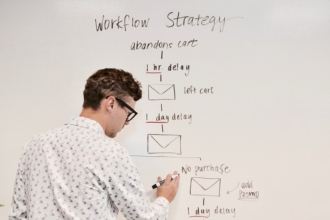
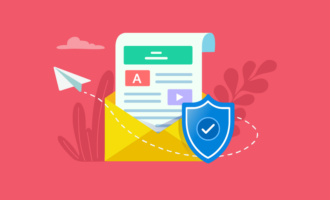
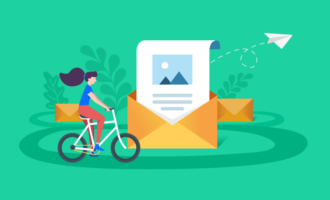
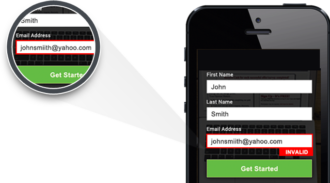


















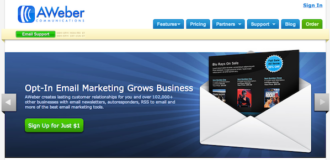

Send Comment: